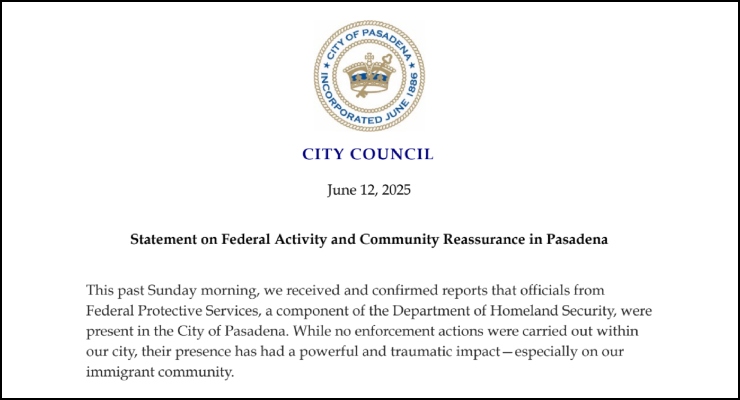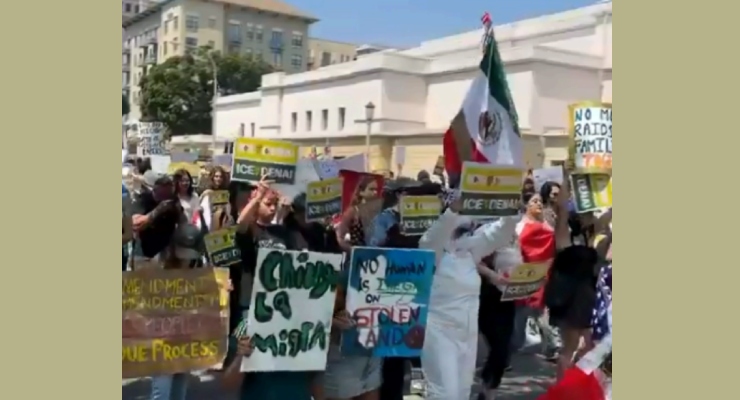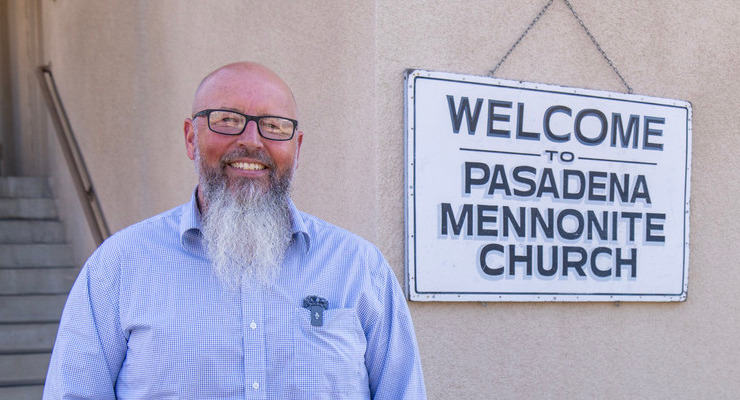
“Snowdrifts of ash, an acrid smell, a lung-burning toxic cocktail hanging in the air,” left the interior of the Pasadena Mennonite Church building unrecognizable following the fire, writer Susan Kim reports, quoting church member Dan Sharp who described “piles and piles of ash—ash on every horizontal surface.”
The Jan. 7 Eaton fire killed at least 17 people and destroyed 9,414 structures, leaving three congregations and their 270 members without a place to worship until their shared building could be professionally cleaned, Kim writes.
Less than two weeks after the disaster, Mennonite Disaster Service leaders reached out to the Church to offer assistance. According to Kim, the Mennonite Disaster Service California Unit funded half the cost of professionally cleaning the building, while the three churches raised the remaining funds.
The historic building, constructed in 1957, housed not only the Pasadena Mennonite congregation but also the Spanish-speaking Connexiones Church of the Brethren and the nondenominational The Church We Hope For, Kim notes.
Now back in their space, the congregations are working together to help their communities recover, Kim wrote. Several members from all three churches have completely lost their homes, with many families displaced because their residences remain filled with toxic smoke and ash.
“It’s not just the rich people,” Sharp told Kim, speaking against stereotypes. The diverse community of Altadena, where recovery is only just beginning, is just five blocks from the church building.
Pastor Juan Pablo Plaza of Connexions Church of the Brethren is among those helping lead recovery efforts for the three congregations sharing the church grounds, according to Kim.
Sharp, a retired civil engineer for the Los Angeles County Department of Public Works, sees reasons for hope despite significant challenges including obtaining permits in California, rising building material costs, and the toxic mix of ash and debris still covering the ground.
“We know a lot of best practices to help make homes more fire resistant,” he told Kim. Sharp is attending Mennonite Disaster Service leadership training in mid-March.
The three congregations, which before the fire had already periodically gathered for joint services, have grown even closer through the crisis.
“You realize in times of crisis how important it is that we work together,” Sharp said, according to Kim. “We want to keep the original, eclectic character of Altadena.”
The community of Altadena, which Sharp described to Kim as “diverse racially and socioeconomically in ways that aren’t found in the rest of Los Angeles County,” faces significant rebuilding challenges but remains determined, as evidenced by local signage proclaiming “Altadena Strong – We WILL Rebuild!”




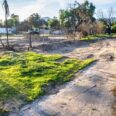







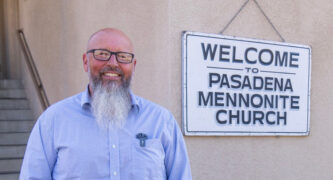

 1 comment
1 comment

